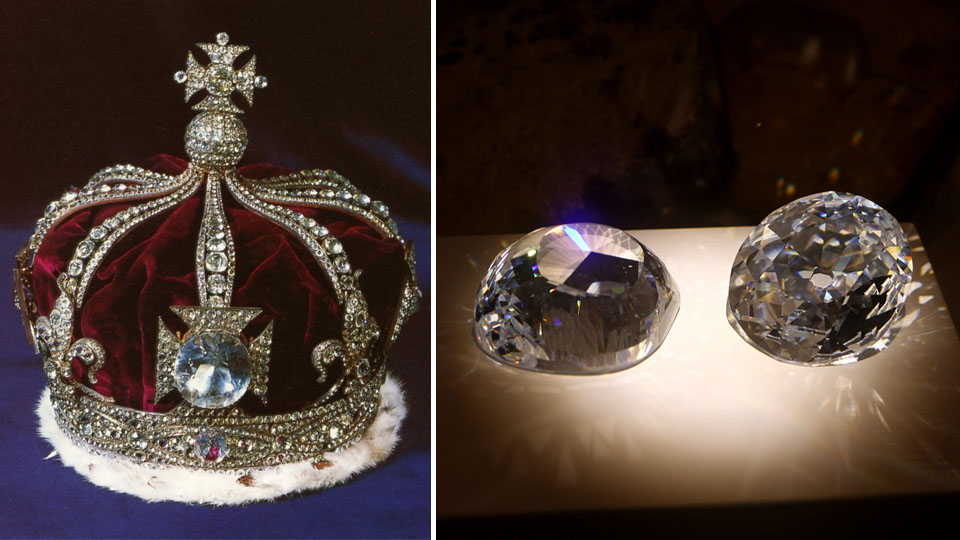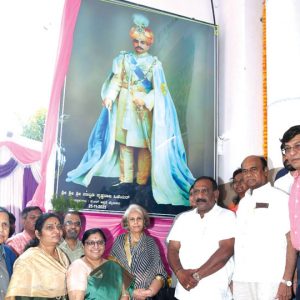By Prof. A.V. Narasimha Murthy, former Head, Department of Ancient History & Archaeology, University of Mysore
Sometime back I was at a jewellery shop in Mysuru where the owner was my good friend. A minor film actress walked into the shop and expressed a desire to purchase a diamond. The shop owner gave a lecture to her on the hazards of buying a diamond but she insisted on buying one.
He then showed some diamonds and finally she bought one. The shopkeeper magnanimously told her to keep the diamond for a month or two and if no untoward incidents happen she may buy it permanently and he would give a bill with a certificate of guarantee. After the lady left, the shop owner told me that neither he nor his shop should get a bad name. A good thought indeed and I appreciated him.
I remember when I was in Hyderabad almost half a century ago working in the Archaeological Survey of India, Dr. Krishnasastri, the Director of Archaeology of the then Hyderabad State took me to his museum. The museum was not open for public for the fear of security. He showed me a huge uncut diamond and he could not estimate its value. However, its value increases when it is cut into different shapes. All these thoughts came into my mind when I thought of writing this note on Kohinoor diamond.
The word Kohinoor is Persian. It consists of two words ‘Koh’ that means a mountain and ‘Nur’ means light. Because of its brilliance it has been rightly called Kohinoor. Because of the greatness of this diamond, it was in great demand and hence many kings and emperors wanted to possess it. This history is highly interesting.
Kohinoor was one of the largest diamonds in the world then and its weight was 793 carats. The word carat was called ‘carato’ in Italian, ‘caratin’ in Greek and ‘quirat’ in Persian. The Kohinoor diamond was discovered in Guntur district of Andhra Pradesh. The Kakatiya kings with their capital at Warangal (Orugallu) ruled over most parts of Andhra during 1083 to 1323 AD.
King Prataparudra and queen Rudramadevi had this diamond. But as they were God-fearing, they adorned Kohinoor on their family Goddess Bhadrakali. Ghayatuddin Tughlaq (1320 AD) invaded the Kakatiya Kingdom and plundered the temple and took away the Kohinoor along with gold and silver.
Later, the diamond came into the possession of Babur who renamed Kohinoor as ‘Babur diamond’. Subsequently his son Humayun came to power and this diamond passed on to his treasury. With great vanity he became the master of this diamond and troubles began to appear for him. He was soon defeated by Sher Shah Suri.
Perhaps, Akbar had premonitions about this diamond and he never entertained it in his Palace. Thus he was safe. Then came Shah Jahan who built the famous Taj Mahal. He was enchanted by this diamond and placed it on his famous peacock throne. Trouble started for him as his son Aurangzeb imprisoned him.
Aurangzeb was happy to possess the diamond. He was not happy with its shining and engaged a lapidary (specialist in shaping and cutting diamonds) to do something with this diamond. But his work was not satisfactory and the weight of this diamond was reduced to 186 carats from 793 carats. Aurangzeb, who had heard of the misery of his predecessors possessing it, cleverly gave it to the Badshahi Mosque.
Persian emperor Nadir Shah (1688-1747 AD) of Iran invaded Delhi Sultanate and carried away gold and diamonds from the mosque and Kohinoor fell into his hands. Nadir Shah carried away the peacock throne and Kohinoor to Persia (modern Iran). However, he was assassinated in 1747 AD and Kohinoor came into the possession of his army chief Ahmad Shah Durrani of Afghanistan. He was thrown out of the palace but managed to run away to Lahore where Ranjit Singh defeated him and took away the Kohinoor.
Ranjith Singh kept this diamond with him but when he was about to die, he asked his family to donate it to the temple of Lord Jagannath of Puri, now in Odisha. But the British occupied Lahore in 1849 AD.
The British proclaimed that Ranjith Singh had given this Kohinoor to the queen of England. Ranjit Singh’s son Dulip Singh, aged only 13, travelled to London and presented the Kohinoor to queen Victoria. Even British were not lucky to have this precious diamond. Shortly after the Indian mutiny of 1857, British Empire started to decline and India won independence.
Though at present Kohinoor is in the hands of the British royalty, the Empire has declined. India, Pakistan, Iran, and Afghanistan claimed this diamond but the British retained it and placed it on the Crown.
From the Kakatiya rulers the possessors of this diamond have had troubles. Some scholars feel that there is a curse which forbids kings, queens and ordinary persons possessing this diamond. Such a precious diamond should belong to a Gods or Goddesses. That is why the Kakatiyas adorned it to Goddess Bhadrakali.
If this diamond or any other diamond comes your way, the best advice is not to accept it and donate it to a God or Goddess of your choice. Then you and your family will be safe, and your posterity will be grateful to you. This is Kohinoor purana.








Very interesting. While I knew the glimpse of owning or not owning a diamond Prof. Narasimha murthy has given a candid chronology of this Kohinoor Diamond as to how the shining stone can bring distress to those who wish to have never belonged to them.
I deeply honour and like all of his writings of the past which rejuvenates who we are and once belonged. There are many things History can bring and teach us where for some others it remains as History of the past and has no bearing for current or future. We only wish had we continued the the lessons and concepts of the past we would have been more wiser and finer today. History again begets and teaches what to choose from and act in daily life.
very interesting……history.